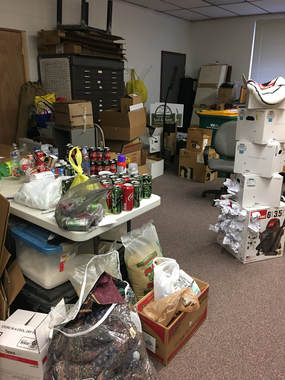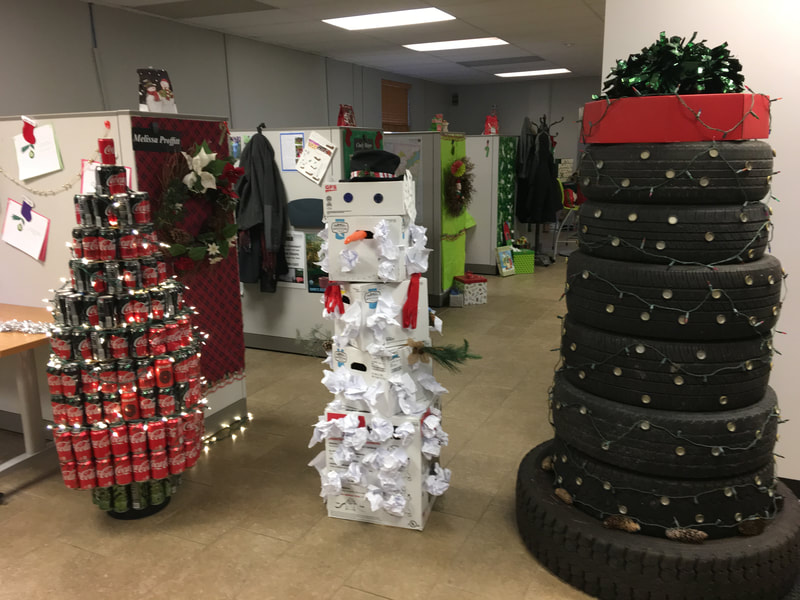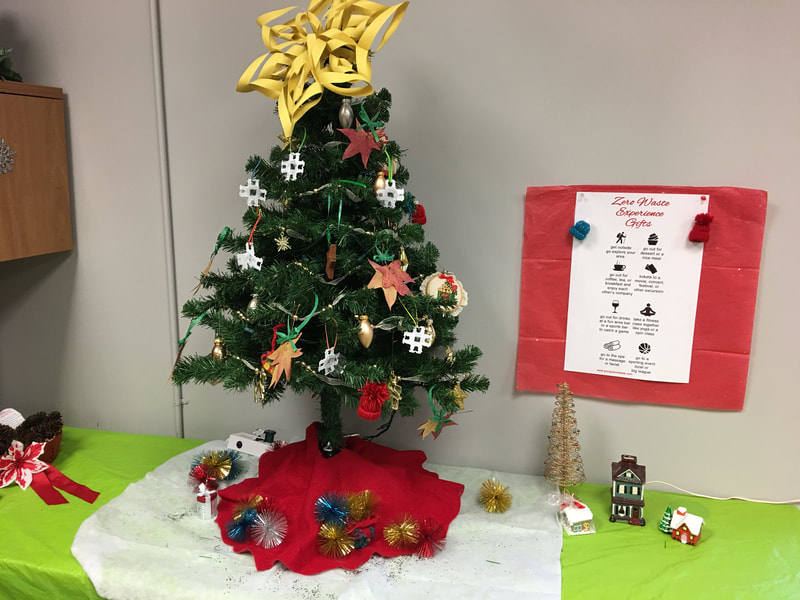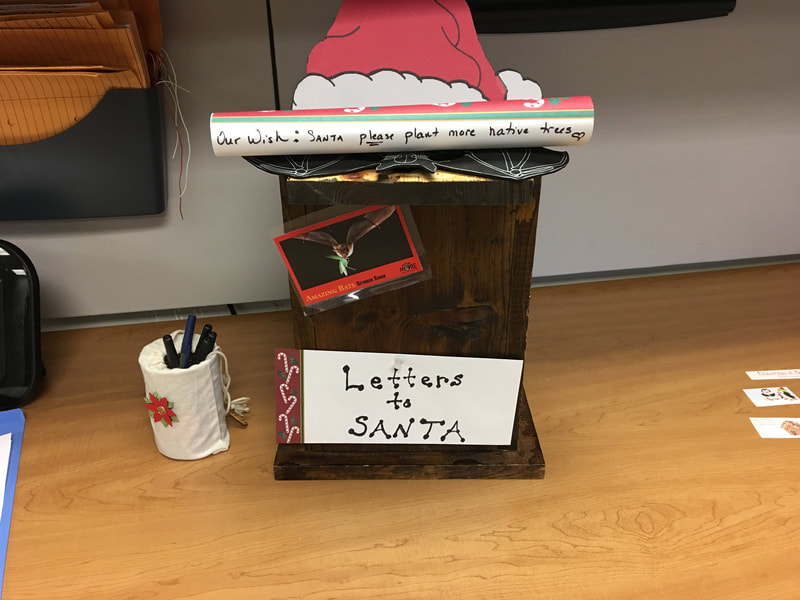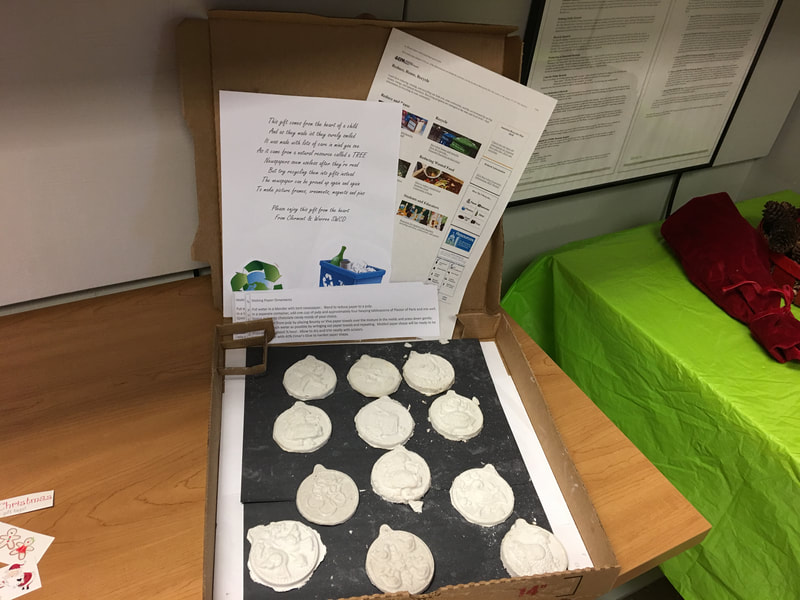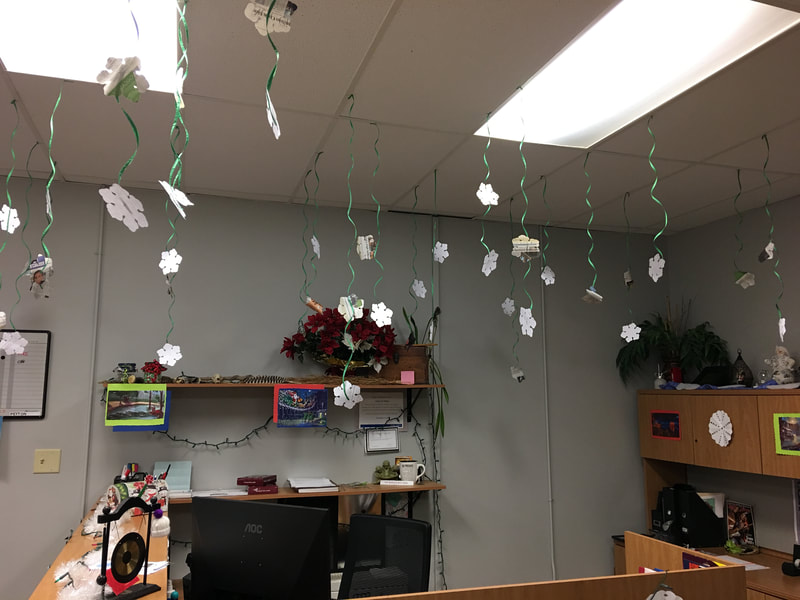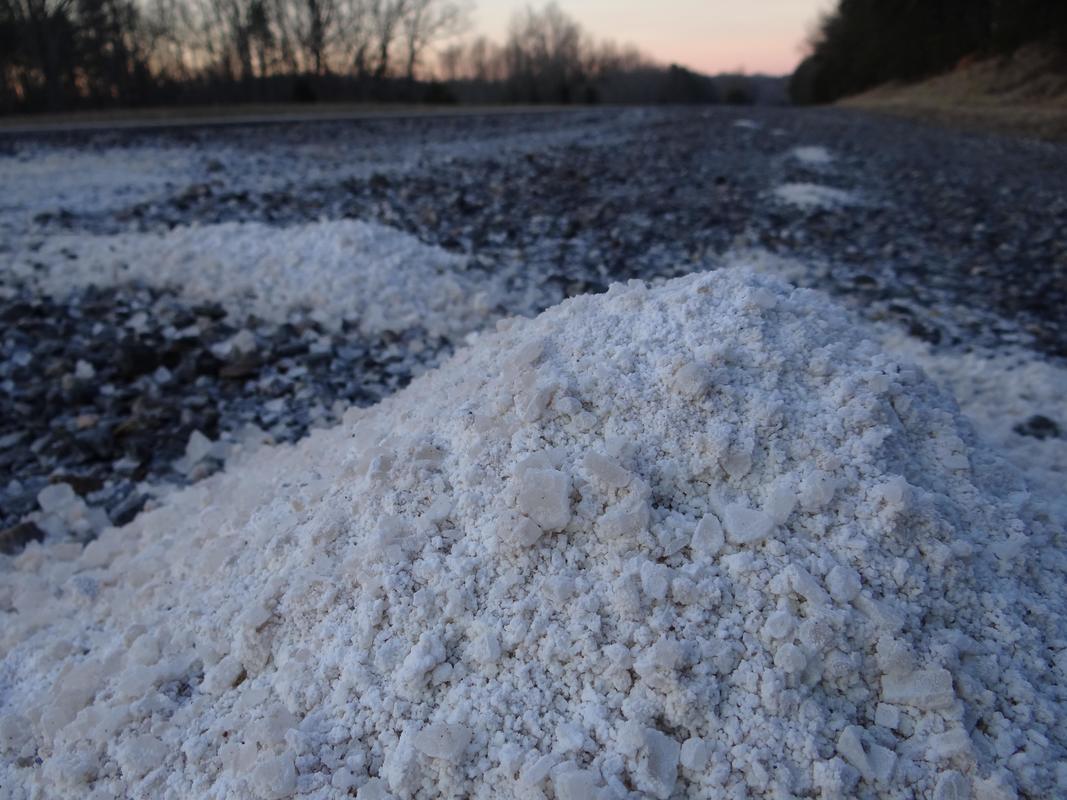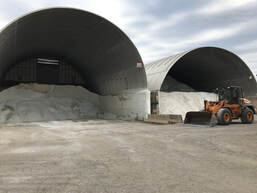 With all the craziness of 2020, our winter weather better not get any big ideas! If snow and ice are perhaps in our future, it is worth reminding ourselves that deicing materials can have adverse effects to our environment, especially our water bodies. Most of the popular deicing products sold are chloride-based products which contain salt with different combinations. Sodium chloride, otherwise known as salt, is the most widely used deicing material. Sodium chloride is an effective deicer, is inexpensive, readily available and easily stored. Chloride which is present in many of the common de-icing materials can damage vegetation, destroy soil’s structure and produce erosion, can damage and kill vegetation and can contribute to automobile corrosion. Common de-icing materials:
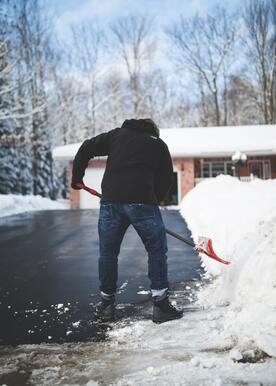 While municipalities’ main priorities remain maintaining clear roads and highways while ensuring safe travel, many municipalities are looking at incorporating de-icing materials that are less impactful on the environment, and we can do that at our homes as well. Here are some tips for reducing or eliminating the use of deicers at your own residence:
So when the next big winter storm strikes, strike back, but in an environmentally friendly way. For more questions regarding Warren County Soil and Water Conservation District programs and/or technical assistance on water or soil questions, visit http://warrenswcd.com or call, 513-695-1337. Additional Resources:
1 Comment
In the last few years we have experienced record rainfall events. While rainfall (otherwise known as stormwater) is a natural occurrence, unfortunately our environment is not always in a “natural” state. In other words, we have developed areas such as roads, sidewalks, roof tops, parking lots and other impervious surfaces where stormwater does not have a chance to soak down into our soil. This stormwater becomes runoff and picks up pollutants from our lawns and streets (examples - vehicle emissions, oil residue, grass clippings, pesticides, leaves, and pet waste) and enters our lakes and streams by way of storm drains thus causing water pollution and impairments within our local bodies of water. Stormwater runoff is the number one threat to our water quality according to the U.S. Environmental Protection Agency. How can we help? Below are some simple management ideas that could be implemented within the landscape to help store and clean some of this stormwater thus lessening the amount of water entering our stormwater sewer systems. 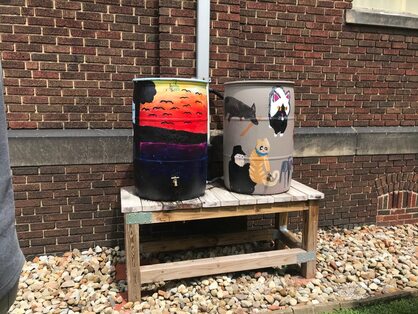 Utilizing Rain Barrels Rain barrels connect to downspouts to collect rain water. The collected water can then be used to water gardens, and be used as grey water for washing outdoor items. Water collected from rain barrels is not for human consumption, however. Some of the other benefits of rain barrels include:
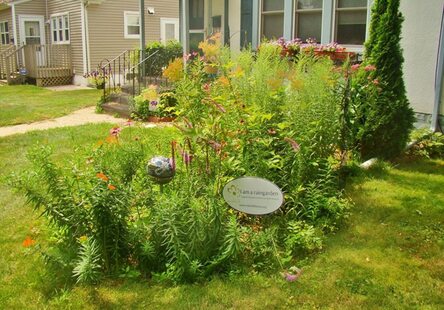 Creating a Rain Garden Rain gardens are a unique feature that can be added to the landscape and is disguised as a flower garden. They have many benefits that include: providing wildlife habitat, providing nectar and pollen sources for pollinators, transforming rainfall runoff into a resource rather than a nuisance, and improving storm water quality as it is infiltrated and redistributed through soils. Rain gardens are purposefully located to maximize the amount of stormwater runoff that flows into the garden rather than off the property. It is important to note that it is not just a garden bed. Garden size, depth, slope, soil amendments and drainage all need to be considered before putting a shovel into the ground. Plants that thrive in your landscape and in southwest Ohio should be considered. Native plants are good choices because they tend to offer more benefits to pollinators and have better survivability in native soils. To help prepare your rain garden’s site, check out the following resources:
Before putting any of these water management strategies into place, please check local ordinances to make sure you understand what is allowable. For more questions regarding rain barrels and rain gardens, contact us! 513-695-1337. Simple, small changes in our everyday lives can make large impacts on the environment. With the approach of cold winter weather, some of these changes can also make a big impact on your economic savings! Here are a few conservation and energy saving tips for this winter: Properly plug drafty leaks Conserve energy and money by weather-stripping and caulking air leaks in windows and around doors. Reducing drafts in a home greatly reduces energy use and cost which is good for your wallet and the environment! Choose a safe De-Icer Shoveling your snow into areas that are level and able to absorb the water once the snow has melted decreases ice build up, and allows potential pollutants from roadways and driveways to be filtered out by plants before reaching our streams. If salting is necessary for safety, remember that chemical de-icing salts that wash off of impermeable surfaces run into our local streams where is it harmful to the fish and other aquatic life. Sweep up excess salt and dispose of properly. An alternative to conventional de-icing salt is to purchase de-icer made from calcium magnesium acetate (CMA), potassium chloride (KCl), or calcium chloride (CaCl2). These are non-toxic de-icing products that do not have the same negative impact on the environment. Recycle Your Old Christmas Lights As we decorate our homes, some of us may have found we have a few strands of lights that no longer twinkle. Instead of trashing them, recycle them. Find a drop off location here.  Zero Waste Gifts Instead of giving items that also come with lots of packaging for all of your gifts, consider giving the gift of amazing experiences! These gifts create memories that last a lifetime in our hearts, and not a lifetime in the landfill. Reusable Bags For your holiday gifts that do require wrapping, use reusable bags and cloth packaging. This includes buying those yummy holiday foods. When you hit the grocery, remember to bring along your reusable bags! During our stream cleanups we always find plastic bags caught up in the stream or wrapped around trees. By using reusable bags, you are reducing the number of plastic bags in our landfills and in our environment. Buy Local, Seasonal Produce Season-appropriate produce requires less energy for transport, is less expensive and often tastes better than out of season produce which must be shipped long distances. According to the Ohio Farm Bureau, late autumn produce includes apples, beets, cabbage, carrots, cauliflower, cilantro, corn, grapes (table), kale, onions, parsnips, peppers, potatoes, pumpkins, radishes, spinach, squash, tomatoes, turnips, and watermelons. There is a little something for everyone! So stay savvy and sustainable this winter season! "...a man who knows that the world is not given by his fathers, but borrowed from his children..." - Wendell Berry, environmental activist and author, 1971 ...and we must leave it for our children in (hopefully) a better state than it was when we borrowed it. Yet in a sense, maybe the world is somewhat "given by our fathers", like a gift we are preparing to leave the next generation. And as the blustery winds of winter start to arrive, the holiday season presents a perfect opportunity to act on that sentiment. Many of us our busy decorating and prepping for the various celebrations that occur this time of year. The holiday season fosters much reflection and connection to those around us, and is a wonderful opportunity to share moments and memories. While we ready our homes for this special time of year, WCSWCD wishes to encourage folks to keep our natural world in mind and take steps to reduce waste and negative environmental impacts. There are many eco-friendly ideas for gearing up for the holidays! Here in our office, we are turning the below items into festive decor and ornaments! Here are some ideas and resources that we are using, and we want to share them for others to try as well!
3-D Snowflake or Star: https://www.wikihow.com/Make-a-3D-Paper-Snowflake https://www.greenmoxie.com/31-diy-christmas-trees-made-from-recycled-materials/ Recycled Single-Serve Coffee Maker Cup Christmas Bell Ornament http://www.glimmercreations.com/2014/11/recycled-single-serve-coffee-maker-cup.html Recycled Paper/Book Pages Decorations and Ornaments http://lorajeansmagazine.blogspot.com/2008/04/paper-bag-flower-from-scratch.html https://www.sassabyparties.com/blog/21-diy-paper-christmas-ornaments-decorations Recycled Jar Lids for Holiday Ornaments https://www.debbie-debbiedoos.com/recycled-jar-lids-christmas-ornaments/ Tin Can Pull-top Ornament https://www.thriftyfun.com/Tin-Can-Pull-top-Ornament.html Recycled DIY Holiday Crafts http://www.architectureartdesigns.com/30-cute-recycled-diy-christmas-crafts/ https://www.goingzerowaste.com/blog/2015/11/28/a-zero-waste-christmas 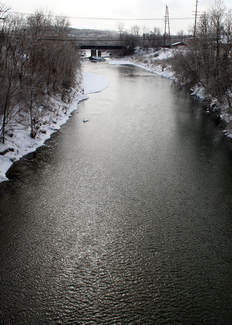 Winter weather is here, so we would like to share some ways to enjoy the snow and protect the environment all at the same time! Consider these friendly tips for weathering the winter while staying conservation minded. Reusable Bags While you are out purchasing your holiday gifts and groceries, remember to bring along your reusable bags! During our stream cleanups we always find plastic bags caught up in the stream or wrapped around trees. By using reusable bags, you are reducing the number of plastic bags in our landfills and in our environment. Tree Recycling If you have a natural Christmas tree this year, please consider recycling or reusing your tree instead of sending it to a landfill. Warren County has a number of drop-off points where you can take your tree to be composted. Click here to visit the Warren County Solid Waste District site for a list of locations. Ice and Snow To avoid ice buildup, try to remove snow from hard surfaces before it becomes compacted into ice. Shovel your snow into areas that are level and able to absorb the water once the snow has melted. This allows potential pollutants from roadways and driveways to be filtered out by plants before reaching our streams. Putting salt on walkways, driveways and sidewalks helps to keep everyone safe from ice. However, keep in mind that the salt only works when pavement temperatures are 20 degrees or higher. This means the product won’t melt snow and ice during extreme cold temperatures. Also, more salt doesn’t mean it will work better. Make sure to follow proper application guidelines when using the product. If you still have piles of salt on your hard surfaces after the snow and ice clears, make sure to sweep up and dispose of the extra salt that didn’t get used. If salt isn’t cleaned up, rain or snow melt will carry the salt to our local streams where is it harmful to the fish and other aquatic life. |
Details
Warren County SWCD Staff BlogA blog to keep you informed on all the latest news at Warren County SWCD and in the conservation world. Archives
May 2024
Categories
All
|
|
|
Contact:PHONE: (513) 695 - 1337
EMAIL: [email protected] HOURS: Monday - Friday 7:30am - 4:00pm (except holidays) Connect:Warren County Soil & Water Conservation District Copyright © 2016
Warren SWCD Privacy Notice. Emails are serviced by Constant Contact. Constant Contact's Privacy Notice. |
